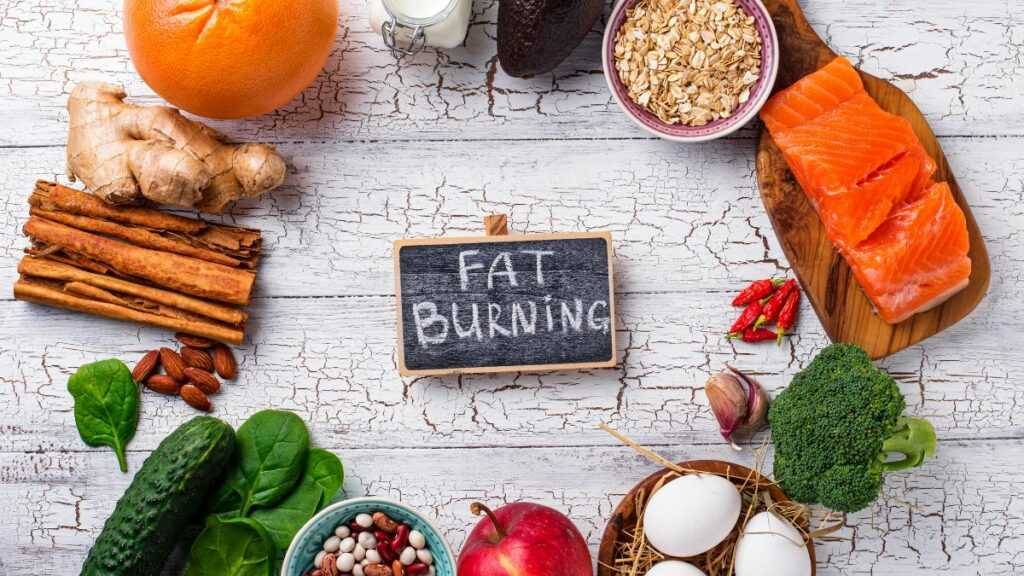Losing body fat without sacrifixing muscle can feel like walking a tightrope. It’s a delicate balance that demands precision—too often, individuals focus solely on the scale, misinterpreting weight loss as progress, only to find their strength and muscle mass has diminished alongside the pounds.
With years of experience in fitness and nutrition guidance, I’ve honed strategies that target fat loss effectively without compromising muscle integrity.
What is essential to understand—and where many plans falter—is differentiating between simple weight loss and targeted fat reduction. A crucial aspect of preserving lean muscle during this process is maintaining adequate protein intake—a key nutrient for repairing and building muscle tissue.
Keep reading as we delve into a scientific yet accessible journey through shedding unwanted fat without losing the muscular gains you’ve worked so tirelessly to achieve. Stay tuned; it’s simpler than you think!
Related reading: How to Lose 20 Pounds in a Month?
Key Takeaways
- To lose body fat without sacrificing muscle mass, prioritize strength training to maintain and build muscle while shedding fat. Strength training boosts metabolism, helping burn more calories even at rest.
- Adequate protein intake is crucial for preserving lean muscle mass during weight loss efforts. Balancing macronutrients is essential; include plenty of protein-rich foods like lean meats, eggs, dairy products, legumes, and tofu in your meals.
- Gradually manage a caloric deficit by prioritizing nutrient – dense foods and incorporating regular strength training to signal the body that muscle tissue is needed, supporting the preservation of lean mass during weight loss.
- Incorporate essential supplements like BCAAs and protein powders to aid in muscle retention during fat loss. Studies have shown that these could potentially lead to higher weight loss and a decrease in body fat percentage when combined with moderate protein intake and a hypocaloric diet.
Understanding Body Composition

Understanding body composition is essential for effective fat loss and muscle preservation. By differentiating between fat loss and weight loss, individuals can prioritize the importance of maintaining muscle mass while reducing overall body fat percentage.
The Importance of Muscle Mass
Keeping muscle mass is really important when you want to lose fat. Muscles do more than make us look strong; they help keep our metabolism going fast. This means even when we are resting, muscles burn calories, which helps with losing weight.
But if we lose muscle, our bodies don’t need as many calories anymore and it gets harder to keep the fat off.
Having more muscle also supports good health in other ways. It makes us stronger so daily tasks are easier, and can improve how well your body uses sugar, which may help prevent diabetes.
To balance losing weight and keeping those helpful muscles, it’s smart to use strategies that focus on both at the same time. Let’s explore how to cut down on fat without giving up muscle power next.
Differentiating Between Fat Loss and Weight Loss
Fat loss and weight loss are not the same thing. When you lose weight, it could be from losing water, fat, or even muscle. But when we talk about fat loss, we mean you’re only getting rid of the body’s fat.
It’s like peeling an orange; what you want to get rid of is just the outer skin, not the juicy fruit inside.
To keep your muscles while losing fat, focus on how your clothes fit and how strong you feel instead of just looking at the scale number. This way, you can be sure that it’s more likely fat you’re losing rather than muscle mass.
Your next step is learning about strategies for keeping muscle while shedding those extra pounds of fat!
Strategies for Losing Fat Without Losing Muscle

Prioritize strength training to maintain and build muscle mass while losing fat. Incorporate adequate protein intake to support muscle preservation and recovery. Manage caloric deficit wisely by creating a moderate, sustainable deficit.
Utilize cardio effectively, such as incorporating high-intensity interval training (HIIT) to burn fat without sacrificing muscle mass.
Prioritize Strength Training
Strength training is a powerful tool for people wanting to shed fat but keep their muscles. It makes your body stronger and keeps muscle mass during weight loss. Lifting weights or doing resistance exercises are good ways to do this.
These activities help boost your metabolism, which means you burn more calories even when resting.
Aim to mix different kinds of strength moves like free weights, machines, or bodyweight exercises into your routine. Try compound exercises that work many muscles at once, like squats and push-ups.
Doing these things can lead to losing more fat and less muscle while on a calorie-restricted diet.
Next up is why eating enough protein matters in keeping muscle as you lose fat.
Incorporate Adequate Protein Intake
After prioritizing strength training to preserve muscle mass, it’s essential to incorporate adequate protein intake into your diet. Protein plays a vital role in maintaining and building lean muscle while supporting fat loss.
Consuming higher protein diets can help preserve lean body mass and promote fat loss. Balancing macronutrients is crucial for losing fat without sacrificing muscle, so make sure to include plenty of protein-rich foods like lean meats, eggs, dairy products, legumes, and tofu in your meals.
Adequate protein intake is crucial for losing fat without sacrificing muscle mass. It helps you feel full and satisfied while promoting the preservation of calorie-burning muscle tissue during weight loss efforts.
Manage Caloric Deficit Wisely
To manage a caloric deficit wisely, it’s crucial to focus on gradual changes rather than drastically cutting calories. This approach helps to preserve muscle mass while losing body fat.
Sudden crash diets can lead to muscle loss, so it’s important to maintain only a moderate caloric deficit. Prioritizing nutrient-dense foods and incorporating regular strength training can help signal the body that muscle tissue is needed, supporting the preservation of lean mass during weight loss.
It’s essential to understand that managing a caloric deficit wisely involves making sustainable lifestyle changes rather than opting for quick fixes or extreme measures. By gradually adjusting your diet and exercise regimen, you can achieve fat loss while preserving muscle mass effectively.
Utilize Cardio Effectively
Incorporate moderate- to high-intensity cardio into your routine for at least 150 minutes per week. This can help you effectively lose fat while maintaining or increasing muscle mass.
Additionally, consider incorporating slow and easy aerobic training methods as they can also aid in preserving muscle while shedding fat.
Remember that both aerobic and strength training are essential for burning fat and safeguarding muscle mass. It’s important to strike a balance between the two, ensuring a well-rounded approach to achieving your body composition goals.
Recovery and Nutrition
Incorporate proper sleep and post-workout nutrition to support muscle recovery. Learn how these factors impact fat loss and muscle preservation.
The Role of Sleep in Recovery
Sleep plays a crucial role in the recovery process after exercise. It gives the body time to repair and build up muscles, which is essential for muscle growth and maintenance. Additionally, adequate sleep helps conserve energy, allowing the body to recover from physical exertion effectively.
Research has shown that poor sleep can lead to increased oxidative stress, glucose intolerance, and insulin resistance, which may hinder weight loss efforts. Lack of sleep is also associated with poorer food choices, increased hunger and calorie intake, decreased physical activity, ultimately impacting weight gain.
Therefore, prioritizing quality sleep is paramount not only for overall health but also for supporting fitness goals such as losing body fat while preserving muscle mass.
Importance of Post-Workout Nutrition
After a workout, providing your body with the right nutrients is crucial for muscle recovery and growth. Protein intake is essential as it aids in muscle repair and recovery. It’s important to consume protein-rich foods like lean meats, eggs, dairy products, or plant-based sources after exercising.
Carbohydrates are also significant for replenishing glycogen stores and supporting recovery. Including healthy carbohydrates such as whole grains, fruits, and vegetables in your post-workout meal can help restore energy levels.
Additionally, staying hydrated by drinking water post-exercise is vital for maintaining bodily functions and aiding in the recovery process.
Ensuring proper post-workout nutrition supports your body’s ability to recover effectively from exercise so that you can continue with your fitness journey feeling strong and energized.
This not only helps prevent fatigue but also promotes better performance during future workouts.
Supplements That Support Muscle Preservation

Incorporate essential supplements like BCAAs and protein powders to aid in muscle retention. Read on for more tips on preserving muscle while losing body fat.
Branched-Chain Amino Acids (BCAAs)
BCAAs are essential amino acids that can aid in muscle retention during fat loss. Studies have shown that BCAA supplementation may enhance muscle growth, reduce fatigue, and support overall liver health.
For individuals looking to reduce body fat without sacrificing muscle mass, incorporating BCAAs into their diet could potentially lead to higher weight loss and a decrease in body fat percentage.
Additionally, research has indicated that BCAAs play a critical role in skeletal muscle anabolism and energy balance – making them beneficial for both men and women aiming to increase muscle growth while speeding up weight loss.
Protein Supplements
After understanding the benefits of Branched-Chain Amino Acids (BCAAs), it’s important to also consider incorporating protein supplements into your routine. Protein is essential for maintaining and building muscle mass while losing body fat.
Research shows that protein supplements can help retain lean muscle mass during weight loss, supporting healthy metabolism and reducing appetite. Additionally, whey-protein supplements have been found to aid in fat loss, especially in overweight or obese individuals.
They may also contribute to controlling appetite, boosting metabolism, and aiding in shedding belly fat.
Monitoring Progress and Adjusting Approach

Continuously track your body composition changes and adjust your diet and exercise regimens accordingly for optimal fat loss while preserving muscle mass. Want to learn more about how to effectively monitor your progress? Keep reading to find out!
Tracking Body Composition Changes
Tracking changes in body composition is crucial for gauging progress in losing body fat while preserving muscle mass. Lean body mass includes muscles, bones, tendons, and internal organs.
By monitoring these changes, it becomes easier to ensure that weight loss predominantly involves shedding fat and not lean muscle mass. This helps individuals in their quest for a healthier body composition by focusing on reducing body fat while retaining or increasing lean muscle mass.
This tracking process provides valuable insight into the effectiveness of one’s fitness and nutrition regimen. It allows for adjustments to be made based on actual results rather than assumptions, leading to more targeted and successful efforts toward achieving a balanced and healthy physique.
Adjusting Diet and Exercise Regimens
After closely monitoring your body composition changes and progress, it’s important to make necessary adjustments to your diet and exercise routines. Consider incorporating more strength training exercises into your workout regimen while ensuring a balanced mix of cardiovascular activities.
Additionally, adjusting your caloric intake based on the progress made will help maintain a healthy rate of fat loss without sacrificing muscle mass. Prioritizing protein-rich foods in your diet can also aid in preserving muscle while losing fat.
Moreover, being mindful of recovery time and ensuring adequate sleep is crucial for allowing muscles to repair properly after intense workouts. Monitoring these factors alongside making gradual changes will lead to sustainable and lasting results without compromising muscle integrity throughout the weight loss journey.
Conclusion
In conclusion, losing body fat without sacrificing muscle mass is achievable by following a well-rounded approach. Emphasizing strength training, adequate protein intake, and smart caloric management are key strategies to accomplish this.
By focusing on practical and efficient methods outlined in this article, individuals can expect impactful improvements in their overall health and body composition. For further guidance or resources on implementing these strategies effectively, consider consulting with a fitness professional or registered dietitian.
Remember that the journey to achieving your desired physique begins with taking consistent and deliberate actions towards healthier habits and routines.
